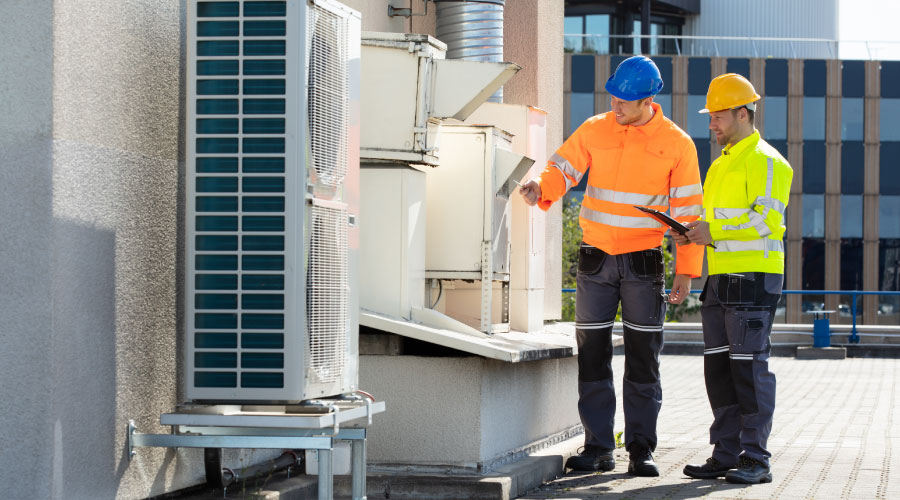Making Renovations Pay
Planning, planning and more planning help managers avoid mistakes in renovations involving HVAC, roofing and electrical distribution systems
A completed renovation project should make everyone happy. Building occupants should find the renovated space more suitable to their needs. Building owners should feel that the investment they made provides a good rate of return through reduced operating costs and better performance. Engineering and maintenance personnel should find that the facility is easier to operate and maintain.
Unfortunately, however, too many facility renovation projects leave everyone involved less than fully satisfied. In some cases, people might even feel that they were better off before the renovation project was implemented.
What can be done to help ensure that renovation and retrofit projects succeed? While requirements vary by the project's type and size, engineering and maintenance managers can take a number of steps to help avoid making the most common renovation mistakes.
HVAC Projects
One of the most common mistakes organizations make when renovating a building HVAC system is to replace the old system in-kind. While the easiest and quickest way to replace an existing HVAC system is simply to install a new system that matches the old one in both system type and capacity, replacing in kind might not be the best option available.
Chances are, conditions in the building today are vastly different from those found when the original system was installed. The number of people in the building has changed. The type of operations performed in the building has changed, and the quantity and type of equipment used in the building has changed. Even the building itself probably has changed.
The result is that the original system might be oversized or undersized, or it might not provide the environment needed. Replacing in kind without considering these changes ensures that any existing capacity deficiencies or system inadequacies will be passed on to the newly installed system. Undersized systems will not properly heat or cool the are, and oversized systems will not operate as efficiently as possible.
The loads changed on the heating and cooling systems, as have energy pricing and availability. Deregulation and real-time pricing have vastly changed the cost of energy. Options that were not economical when the building was constructed now might prove to reduce operating costs. Replacing in kind ignores these opportunities to reduce operating costs.
Such an approach also precludes the use of new HVAC technologies that have arrived in the last 10 years. New technologies have led to systems that operate more efficiently, are more reliable, provide better environmental control and are easier to maintain. Replacing in-kind without considering new HVAC technologies prevents facilities from taking advantage of these and other features.
Another common mistake in HVAC renovation projects is to ignore maintenance requirements. Renovated systems also must be installed in a way that allows them to be maintained. Too often, new and highly advanced systems are installed with little or no consideration as to how they will be maintained.
Balancing and shutoff valves are hidden behind walls with no access panels. Many newer systems, such as high-efficiency chillers, are larger than the systems they replace. But cramming the new components into a space that will not allow access for maintenance only guarantees that those components will not be properly maintained.
Equally important, maintenance personnel will be required to properly set up new systems and maintain them, but in many cases, particularly with the use of new technologies, technicians will not be familiar with those systems and will need to undergo training.
Similarly, because many new systems make extensive use of microprocessors, maintenance personnel need tools to test and maintain those systems. Installing new systems without training maintenance personnel or giving them the tools necessary is a sure way to make sure systems do not perform as designed.
Roofing Renovations
By far the most common mistake that organizations make in implementing a roofing renovation is to let economics dictate the project. Engineering and maintenance managers have a wide range of options when it comes to replacement roofs, and the least expensive option seldom is the one that is best suited for the facility.
Organizations must carefully match roofs to the application if roofs are to perform well in the long run. On what type of facility is the roof to be installed? Must the roof handle regular foot traffic? Is equipment installed on the roof? Does the roof feature a large number of roof penetrations? What is the slope of the existing roof? Why did the existing roof fail?
Not all types of roofing perform equally well under different conditions, so managers must consider these questions when evaluating replacement roof options.
Skipping a detailed inspection of the existing roof also can undercut roof renovation projects. To a great extent, the condition of the existing roof will determine the type and extent of the roof renovation project. If damage is minor and confined to a relatively small area, the project can focus on recovering or repairing damaged areas.
But if the damage is extensive, the renovation will be a replacement project. Either underestimating or overestimating the extent of the damage can result in the wrong type of renovation.
Planning and performing roofing inspections must be detailed and thorough. Managers should start by going through the roof's maintenance history. When was it installed? Is it the original roof or a replacement? Was the roof replaced or recovered? Does the roof have a history of leaks? If so, how were those leaks repaired?
Electrical Distribution Systems
When managers must renovate electrical distribution systems, they are under pressure to complete projects quickly and at a minimum cost. These constraints often lead to the most common retrofit mistake — rushed retrofits.
Such retrofits are implemented with little thought as to how best to achieve the system upgrade. Instead, managers focus their attention on an immediate need, such as increased capacity in a particular location. They give no consideration to the big picture of how the electrical system functions in the entire facility. Technicians install new equipment and run new circuits with no planning. The result is a piecemeal system that grows in complexity, is difficult to maintain and seldom performs well.
Another common renovation mistake is failing to build flexibility into the new system. Facilities of all types are in a constant state of flux today. Operations change, occupants move, and electrical needs change. If electrical systems are to keep up with these changes without causing major disruptions to building occupants and expenses to building owners, managers must plan for flexibility.
Unfortunately, managers plan most electrical system renovations to meet the specific needs of some project currently being implemented but give little consideration to future requirements. At best, they plan for some spare capacity, but spare capacity is only one aspect of flexibility. Getting that spare capacity where it is needed it is equally important.
Managers can avoid both of these common mistakes through careful planning of the electrical renovation, looking at a facility's immediate need, as well as at the mid- and long-term requirements. Then they can design renovations to meet all of the facility's long- and short-term requirements.
Avoiding Mistakes
Avoiding these and other renovation mistakes is relatively easy. All managers must do is remember to step back from individual projects, avoid tunnel vision, and look at the big picture.
How will this project interact with the rest of the facility? Can individual projects be combined to provide a more comprehensive solution? Is there a way to implement the renovation project so the benefits can be more widespread and longer term?
By carefully planning renovation projects, managers can avoid the costly mistakes and maximize the benefits to the organization, its occupants and its maintenance and engineering staff.
Roof Renovation Reflections
One all-too-common mistake that occurs during roof renovations is failing to consider the value of reflective roof coatings. Dark roofing materials, such as asphalt and black rubber membranes, absorb about 90 percent of the solar energy that strikes them. This absorption raises the surface temperature of the roof.
On a day with no wind, it is not uncommon to find surface temperatures on dark roofs of 140-180 degrees. The higher temperature increases the cooling load in spaces located directly below the roof, and it accelerates the breakdown of roofing materials.
In contrast, white-roof membranes absorb only 20-25 percent of solar energy, reducing the temperature of the roof's surface and the cooling load on the building’s HVAC system and extending the overall life of the roofing materials.
|
Related Topics:











